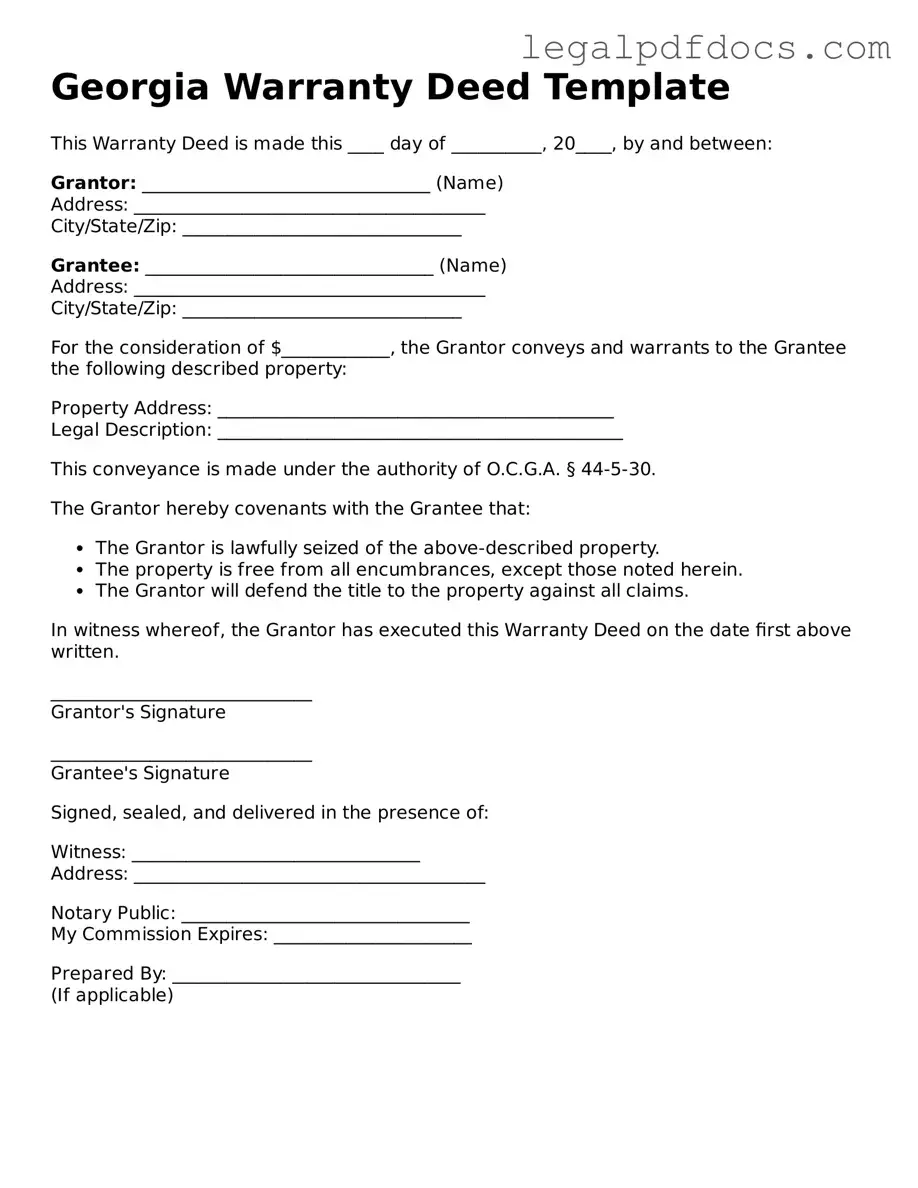The Georgia Deed form serves as a crucial legal document in the realm of real estate transactions, facilitating the transfer of property ownership from one party to another. This form encompasses various essential components, including the names of the grantor and grantee, a clear description of the property, and the terms of the transfer. In Georgia, the deed must be executed with the appropriate signatures and notarization to ensure its validity. Different types of deeds, such as warranty deeds and quitclaim deeds, may be utilized depending on the nature of the transaction and the level of protection desired by the parties involved. Additionally, the form requires adherence to state-specific regulations, including the payment of transfer taxes and recording fees, which can vary by county. Understanding these key aspects is vital for anyone involved in real estate transactions in Georgia, as it helps to ensure that the transfer process is both legally sound and efficient.
